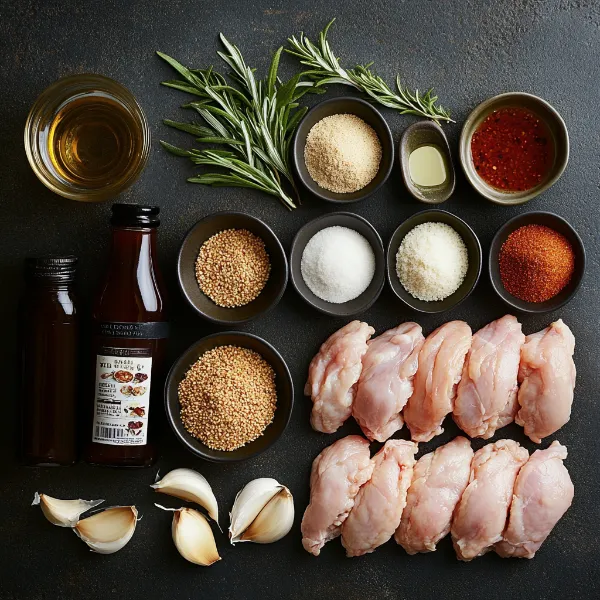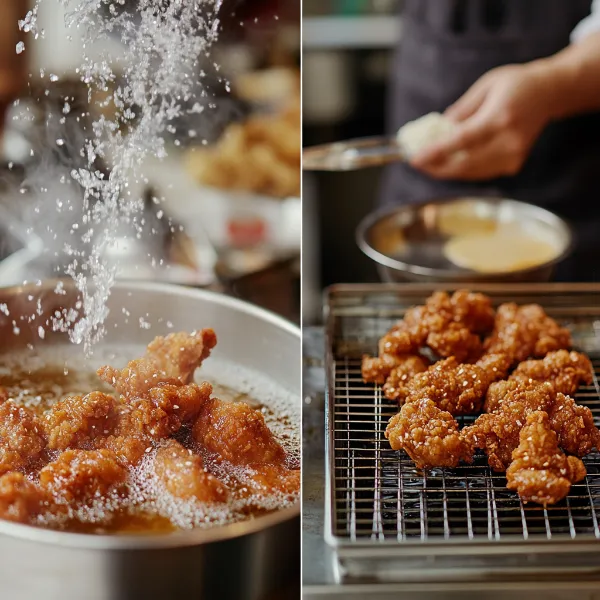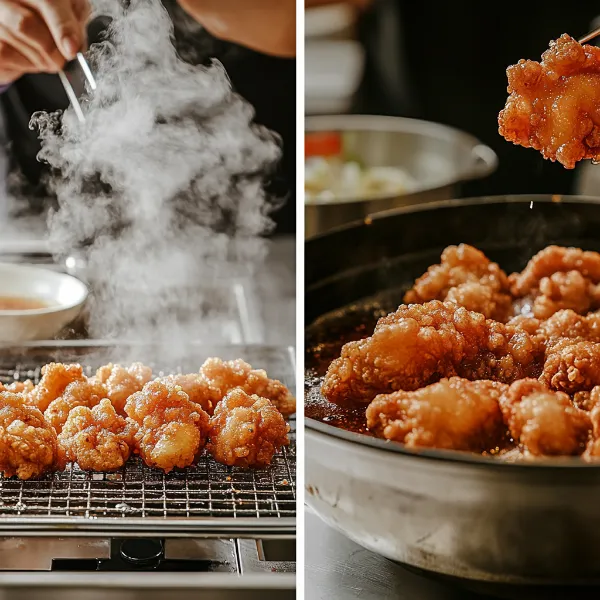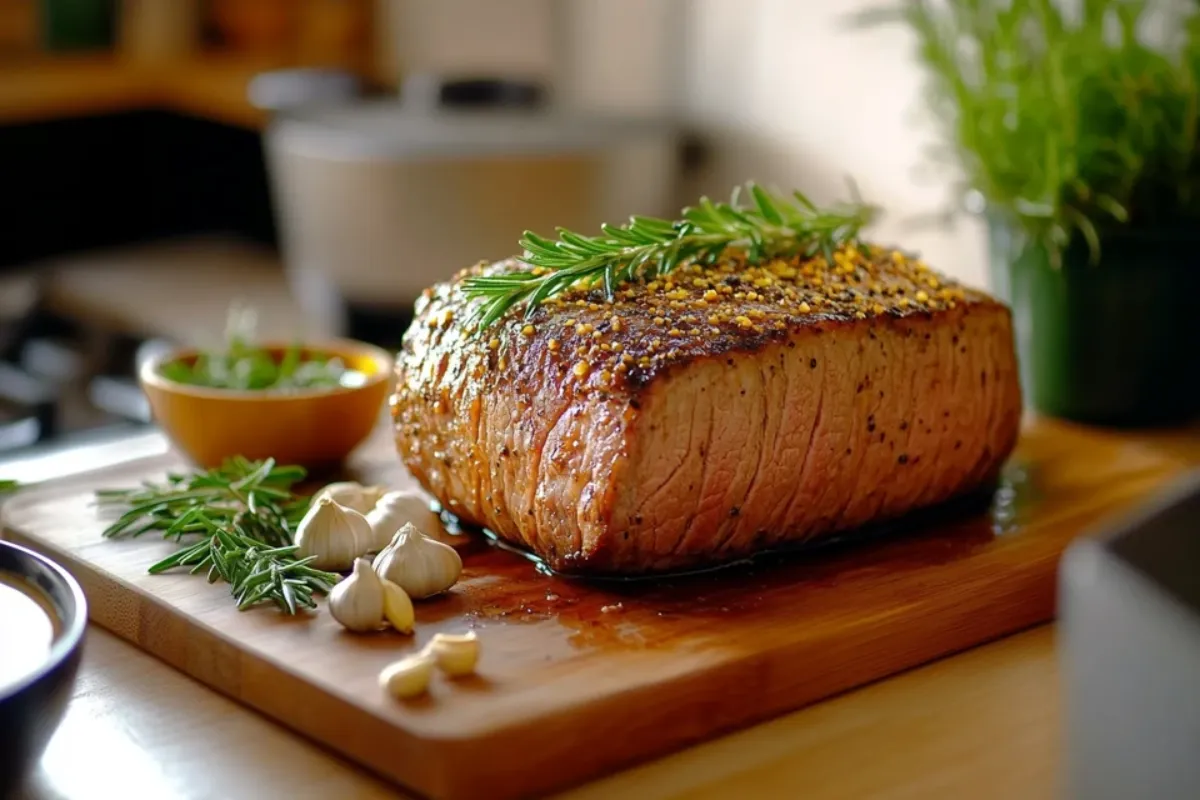Part 1: Introduction to Korean Fried Chicken’s Unique Texture
Overview of Korean Fried Chicken
Why is Korean Fried Chicken Less Greasy, often hailed as a culinary marvel, has taken the world by storm with its light, crispy texture and bold flavours. Unlike many traditional fried chicken styles, it is celebrated for its crackly crust that retains crispiness even when coated in sauces. Its innovative cooking methods have made it a standout dish in global cuisine.
Key features that set Korean fried chicken apart include:
- A delicate, non-greasy texture.
- A perfect balance between flavour and crunch.
Its rise in popularity is attributed to its unique preparation techniques, making it an iconic representation of Korean culinary innovation.
The Perception of Greasiness in Fried Foods
Common Challenges with Traditional Fried Chicken
Traditional fried chicken often struggles with greasiness, resulting in:
- A heavy, oil-soaked batter.
- An overly rich taste that can overwhelm the palate.
This greasiness not only affects the flavour but also the overall dining experience, leaving many feeling weighed down after consuming.
Why Greasiness Affects the Dining Experience
Excess grease can detract from the crispiness and texture of fried chicken, making it less enjoyable. Korean fried chicken addresses this issue through innovative cooking techniques that focus on reducing oil absorption without sacrificing flavour.
The Purpose of This Article
This article explores the techniques, ingredients, and cultural philosophies that make Korean fried chicken less greasy, offering insights into why it stands out in the world of fried foods.
Part 2: Cooking Techniques That Reduce Greasiness
The Double-Frying Method
Step-by-Step Explanation
The double-frying method is the cornerstone of Korean fried chicken’s signature texture. Here’s how it works:
- First Fry: Chicken is fried at a lower temperature to cook the meat through and form a light crust.
- Resting Phase: The chicken is allowed to rest, releasing excess moisture.
- Second Fry: Chicken is fried again at a higher temperature, creating a crispy, oil-free crust.
How It Removes Excess Oil and Enhances Crispiness
The first fry cooks the chicken and removes moisture, while the second fry seals the crust, preventing oil from soaking in. This method ensures each bite remains light and satisfying.

Optimal Oil Temperatures
Maintaining the right oil temperature is crucial to reducing greasiness:
- First Fry: 160°C (320°F) to cook the chicken evenly.
- Second Fry: 180°C (350°F) to create a crispy, golden crust.
Consistent temperatures prevent oil absorption, ensuring a clean, non-greasy finish.
Use of Starch in Coatings
Role of Cornstarch and Potato Starch
Korean fried chicken relies on a starch-based coating rather than flour-heavy batters. These starches:
- Create a thin, crackly crust that crisps up without trapping oil.
- Repel oil more effectively than flour, contributing to the light texture.
How They Create a Thin, Crackly Crust
The starch coating forms a protective barrier, ensuring that the oil doesn’t soak into the chicken. This results in a texture that feels crisp yet delicate.
Drainage and Resting Techniques
Draining Oil Immediately After Frying
Using wire racks to drain fried chicken helps eliminate excess surface oil, maintaining its light texture.
Resting Between Fries
Allowing the chicken to rest between the first and second fry releases trapped moisture, preventing greasiness during the final fry.

Light Batter Coatings
Korean fried chicken uses minimal batter compared to Western styles. This approach avoids:
- Thick coatings that absorb oil.
- Overly heavy textures that can overwhelm the dish.
Part 3: Ingredients and Preparation Methods
Choice of Chicken Cuts
Preference for Smaller, Tender Cuts
Smaller cuts, like drumsticks and wings, cook more evenly and reduce residual oil.
Quality of Frying Oil
Use of Neutral Oils
Neutral oils like canola or soybean oil are preferred for:
- Their clean taste that doesn’t overpower the chicken.
- Their ability to maintain a high smoke point, reducing residue.
Importance of Fresh Ingredients
Using fresh chicken and marinades prevents:
- Excess water retention, which can lead to greasiness.
- Loss of flavour caused by frozen or pre-processed chicken.
Preparation Before Frying
Drying Chicken Thoroughly
Removing surface moisture prevents oil splatter and absorption, creating a crispier result.
Lightly Seasoning Before Coating
Minimal seasoning ensures the chicken’s natural flavour isn’t masked, while also reducing excess salt or oil interaction.
Part 4: Cultural and Culinary Factors
Culinary Philosophy Behind Korean Fried Chicken
The culinary philosophy emphasises:
- Balanced Textures: A focus on lightness and crispiness.
- Complementary Flavours: Sauces and sides that enhance rather than overpower.
Comparison to Western Fried Chicken
- Batter Thickness: Western fried chicken often uses a thicker batter, trapping more oil.
- Frying Techniques: Pressure frying in Western methods contributes to a heavier feel.

Influence of Korean Food Culture
Lighter Sides
Pairing fried chicken with sides like pickled radish and kimchi balances the richness, enhancing the overall dining experience.
Part 5: Scientific Perspective on Greasiness
How Double-Frying Reduces Oil Absorption
The first fry removes surface moisture, while the second fry seals the crust, preventing oil penetration.
The Role of Starch in Oil Resistance
Starch-based coatings are less porous than flour, effectively repelling oil.
Oil Temperature and Absorption Dynamics
Maintaining optimal heat prevents oil pooling, a common issue at lower frying temperatures.
Part 6: Practical Tips for Achieving Less Greasy Fried Chicken at Home
Mastering the Double-Fry Technique
Follow these steps:
- Fry at low heat first.
- Rest chicken to release moisture.
- Fry again at high heat for a crisp finish.
Choosing the Right Ingredients
- Opt for fresh chicken and cornstarch-based coatings.
- Use neutral, high-quality frying oils.
Post-Frying Practices
Drain chicken on a wire rack rather than paper towels to prevent reabsorbing oil.
Part 7: Conclusion
Why Korean Fried Chicken Stands Out
Korean fried chicken achieves its signature lightness and crispiness through a combination of:
- The double-frying method.
- Minimal batter and starch coatings.
- Optimal frying techniques and high-quality ingredients.
Appreciating the Art of Korean Fried Chicken
Balancing indulgence with texture and flavour, Korean fried chicken offers a perfect example of culinary innovation. Its methods not only enhance taste but also redefine how fried foods can be enjoyed without excessive grease.

